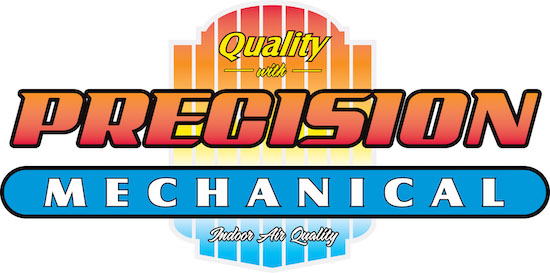
Where you aware that more than half of your home’s energy costs are for your heating and cooling? That’s why it’s essential to secure an energy-efficient HVAC system.
Furnace efficiency standards were last revised to an Annual Fuel Utilization Efficiency (AFUE) rating of 80% in 2015. This rating system measures how effective your furnace is at turning natural gas into heat. An AFUE rating of 80% means your furnace will waste about 20% of the fuel it uses while generating heat.
In 2022, President Biden proposed new energy-efficiency standards for residential gas furnaces that would greatly lower emissions, save consumers money and stimulate sustainability.
The updated standards are anticipated to:
- Save Americans $1.9 billion annually.
- Cut carbon emissions by 373 million metric tons and methane emissions by 5.1 million tons over three decades, the equivalent of what 61 million homes emit each year.
Starting in 2029, the proposed rule would require all new gas furnaces to feature AFUE ratings of 95%. This means furnaces would turn nearly 100% of the gas into usable heat.
Considering these guidelines, you might be asking yourself what does that mean for my existing furnace? Currently, next to nothing, as the proposed rule will not go into effect until 2029 at the earliest and does not affect furnaces that are already in use.
But if you are considering furnace replacement in soon, highly energy-efficient furnaces are now available. Find out how these furnaces can lower your monthly energy bills.
Guide to Condensing Furnaces
How Condensing Furnaces Work
A condensing furnace is a style of heating system that uses a secondary heat exchanger to collect wasted heat from the furnace's exhaust gases. This reduces the quantity of energy wasted, improves energy efficiency and lowers greenhouse gas emissions. It also involves less natural gas to produce the same volume of heat when compared to other types of furnaces.
How Condensing Furnaces Differ from Non-Condensing Furnaces
The biggest difference between a condensing furnace and a non-condensing furnace is that the former uses a secondary heat exchanger to gather any wasted heat from its exhaust gases, while the other does not.
Expected Longevity of a Condensing Furnace
The life span of a condensing furnace depends on the brand, model and other factors. Generally speaking, a condensing furnace should last between 10-20 years with proper maintenance and regular service. If you put off scheduled maintenance, the unit may not last as long.
Why Condensing Furnaces Cost More
Generally, condensing furnaces are more require a large upfront cost than non-condensing furnaces. This is because of their increased efficiency and the additional components needed to capture any wasted heat from its exhaust gases. However, the additional energy savings can frequently offset the price of purchase. So long term, it may be worth investing in a condensing furnace.
Guide to Variable-Speed Furnaces
Variable-Speed Furnaces: What You Need to Know
A variable-speed furnace can fine-tune its fan speed based on the heating preferences of your home. It operates at a slower speed until it senses a drop in temperature and then speeds up to produce more heat. This [precise fan is significantly more efficient than conventional furnaces, as it only uses the minimum amount of energy necessary to heat your home, resulting in more savings on your utility bill.
Most variable-speed furnaces are condensing furnaces, although some are available in non-condensing models with lower AFUE ratings. If a manufacturer wants a furnace to be classified as a condensing furnace, it must offer an AFUE rating of 90% or higher.
Do Variable-Speed Furnaces Run Constantly?
A variable-speed furnace doesn’t need to stay on all the time. Instead, it runs at different speeds based on the temperature in your Rapid City home as well as the amount of energy it uses to maintain that temperature.
When sufficient energy is necessary to maintain your set temperature level, the furnace will shift to a higher speed to handle the demand. This allows for more efficient heating in your home while also providing quieter operation.
Guide to Two-Stage Furnaces
Two-Stage Furnaces: What They Are and How They Work
A two-stage furnace is a type of heating system that utilizes two different stages of operation — high and low. In the low stage, the furnace operates at a reduced capacity as a way to maintain the chosen temperature for your home more efficiently. During the high stage, the furnace will instead function at peak capacity to meet demands for more heat. With a two-stage furnace, you can maintain greater energy efficiency and steady temperatures throughout your home.
While two-stage furnaces are highly efficient, not all all types are condensing furnaces.
Does a Two-Stage Furnace Run All the Time?
A two-stage furnace won’t run all the time. In the low stage of operation, the furnace runs at diminished capacity in order to maintain a planned temperature more efficiently within your home. When a greater demand for energy is needed to maintain the set temperature, the furnace switches to its high stage and operates at full capacity. For this reason, two-stage furnaces are powerful enough to help reduce energy costs without operating constantly.
Differences Between Two-Stage and Variable-Speed Furnaces
Two-stage furnaces have two stages of operation, low and high. During the low stage, the furnace performs at reduced capacity to help sustain a desired temperature within your home. When more warmth or cooling is desired, the furnace will switch to its high stage and operate at maximum capacity.
Variable-speed furnaces, meanwhile, can operate at multiple speeds in order to maintain a comfortable temperature at home. As such, variable-speed furnaces offer greater savings on your utility bills .
Differences Between One- and Two-Stage Furnaces
One-stage furnaces have a single stage of operation and operate either at full power or not at all. This translates to higher energy bills because the furnace runs constantly in order to maintain a desired level of comfort within your home.
Conversely, two-stage furnaces have two stages of operation, low and high. While in the low stage, the furnace runs at lower capacity in order to maintain the desired temperature more efficiently. When more warmth or cooling is necessary, the furnace will shift to its high stage and operate at full capacity.
Arrange Your Furnace Install Appointment with Precision Mechanical Today
Making sense of modern furnace technology can be confusing. That’s why Precision Mechanical experts are here to help with a free, no-pressure quote for furnace installation. We’ll assess your home, your heating requirements and your budget before helping you find the right solution. Call us at 605-702-0850 to get started today!














